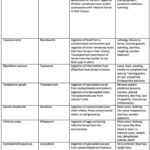How Long After Eating Can You Give Your Dog Insulin
How Long After Eating Can You Give Your Dog Insulin: A Comprehensive Guide for Pet Owners
As a pet owner, you want the best for your furry companion. This includes providing them with the necessary care and attention they need to maintain their health and wellbeing. If your dog has been diagnosed with diabetes, then you may be wondering how long after eating can you give your dog insulin.
Insulin is a hormone that regulates blood sugar levels in the body. It helps to convert glucose into energy and store excess glucose in the liver. In dogs with diabetes, their bodies are unable to produce enough insulin or use it effectively, resulting in high blood sugar levels.
When it comes to administering insulin to your dog, timing is crucial. Giving your dog insulin at the wrong time can lead to dangerous complications such as hypoglycemia (low blood sugar) or hyperglycemia (high blood sugar).
So, how long after eating can you give your dog insulin? The answer depends on several factors, including the type of insulin your dog is taking, their individual response to insulin, and their feeding schedule.
Types of Insulin for Dogs
There are several types of insulin available for dogs, including rapid-acting, short-acting, intermediate-acting, and long-acting. Each type has a different onset and duration of action.
Rapid-acting insulin: This type of insulin starts working within 15 minutes of injection and lasts for up to four hours. Examples include NovoRapid and Humalog.
Short-acting insulin: This type of insulin starts working within 30 minutes of injection and lasts for up to six hours. Examples include Humulin R and Actrapid.
Intermediate-acting insulin: This type of insulin starts working within two to four hours of injection and lasts for up to 12 hours. Examples include NPH insulin and Humulin N.
Long-acting insulin: This type of insulin starts working within four to six hours of injection and lasts for up to 24 hours. Examples include Insulin Glargine and Insulin Detemir.
Your veterinarian will determine which type of insulin is best for your dog based on their individual needs and response to treatment.
Feeding Schedule
The timing of your dog’s meals can also affect when you should administer insulin. Dogs with diabetes should be fed a consistent diet at the same time each day. This helps to regulate their blood sugar levels and makes it easier to manage their insulin doses.
Most veterinarians recommend feeding your dog twice a day, 12 hours apart. You should give your dog their insulin injection immediately after they eat, or within 30 minutes of eating.
If your dog is a picky eater or has a history of vomiting after meals, talk to your veterinarian about adjusting their feeding schedule or changing their diet.
Individual Response to Insulin
Every dog is different, so their response to insulin can vary. Some dogs may require higher doses of insulin, while others may need lower doses. Your veterinarian will monitor your dog’s blood sugar levels and adjust their insulin dose as needed.
It’s important to follow your veterinarian’s instructions carefully when administering insulin to your dog. Giving too much insulin can cause hypoglycemia, which can be life-threatening.
Signs of Hypoglycemia in Dogs
Hypoglycemia occurs when your dog’s blood sugar levels drop too low. Signs of hypoglycemia in dogs include:
– Weakness
– Lethargy
– Confusion
– Seizures
– Coma
If you suspect that your dog is experiencing hypoglycemia, contact your veterinarian immediately.
Conclusion
Administering insulin to your diabetic dog requires careful timing and attention to detail. The answer to the question “how long after eating can you give your dog insulin” depends on several factors, including the type of insulin they are taking, their feeding schedule, and their individual response to insulin.
By working closely with your veterinarian and following their instructions carefully, you can help your dog manage their diabetes and live a happy, healthy life. And who knows, maybe one day your furry companion will thank you with a wagging tail and a slobbery kiss (just don’t let them lick the insulin!).



